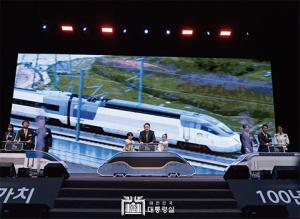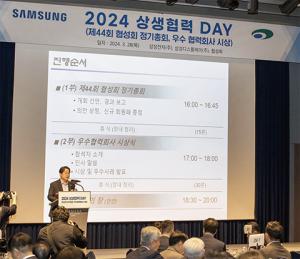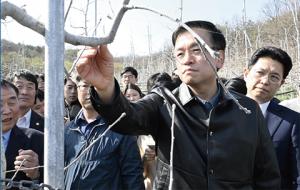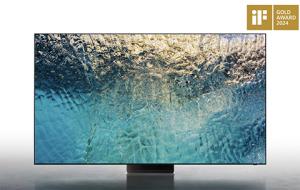 |
||
| ▲ 한국화가 ‘구산 김승학’ 화백 | ||
급변하는 문명 속의 아방가르드적 예술세계와 시대 산물인 현대미술의 현란함 속에서 전통 회화가 자리하고 있는 것은 박제되고 골동화 된 것이 아닌 또 다른 깨달음의 성찰이라고 사료된다. 나는 모양이 없는 거대한 우주 속에서 홀로 길을 걷는 순례객이 되고 싶어 오늘도 그 아름다운 여정을 노래하며 집착과 버림의 반복된 고통 속에서 전달하고자 하는 나의 길을 걷고 있다. <구산 화백의 작가 노트 중에서>
고요하고 웅장한 ‘진경산수’의 작품세계
김제가 낳은 한국화 거장 ‘구산(九山) 김승학 화백’ 은 시대의 흐름 속에 자신만의 강한 신념과 화풍으로 한국 화단을 이끌어 가는 작가이다. 구산 화백은 우리네 산하를 누비며 스케치 한 그림으로 웅혼한 한국 산하의 기상을 표현해 낸 실경 및 진경산수화 작품들이 많다. 여러 붓 중에서도 특히 가느다란 세필을 이용해 단단한 바위와 잔잔한 안개와 물, 나무와 무성한 풀 등을 성실한 터치와 안정적인 구도로 차곡차곡 쌓아 올린 독자적 기법은 완벽한 완성도와 함께 경이롭기까지 하다. 대표적으로 2006년 전북도립미술관 기획전에 선보인 <독도, 동도 천장동굴과 서도> 작품은 일본과 국제적인 영해 분쟁지역에서의 역사의식이 살아나도록 철저한 실경으로 묘사했고, <외금강 천녀봉 소견> 작품 역시 1999년 금강산 첫 개통 때 탐방하여 실제 보고 느낀 감정을 실경으로 드러낸 작품으로 그 섬세함은 이루 말할 수 없다. <산동의 봄>은 산수유의 소박하고 화사한 봄빛을 담으려고 진채를 사용하여 꽃잎을 두드러지게 표현한 작품이다. 또한 <화율리의 겨울>은 자신이 살고 있는 골짜기 마을의 겨울 풍경을 그린 작품으로 밤새 내린 눈이 마을과 산야를 포근히 감싸고 이른 아침 햇살을 표현한 것이다. 화율리는 우리나라 초기 한옥성당이 건립되었던 유서 깊은 곳으로, 하얀 눈빛처럼 마음도 정화되어 가는 성당촌 작품 역시 화제가 되었다. <대둔산 소견>은 호남의 소금강인 대둔산의 만추풍경이다. 하늘이 어루만져 진다는 정상 마천대가 화강암으로 희게 솟아 있는데 아득히 오르는 철 계단 밑에 가을 하늘의 구름이 휘돌아 걸쳐 있고 유명한 구름다리 위에 등산객들 발걸음의 설렘이 보이는 작품이다. 이 모든 작품들은 현장감이 극대화 된 것으로 그 속에 그대로 빨려들게 하는 느낌을 갖게 한다. 구산 화백은 “조물주가 주신 큰 선물인 우리의 산천, 그 아름다움을 부족한 붓 끝에 담아 가감 없이 펼쳐 보여, 마치 초상화의 전신사조(傳神寫照)처럼 풍경 또한 정신과 의태를 담아내야 한다는 생각으로 영원한 화두인 실경내지는 진경산수 작품을 해 온 것이다”고 말했다. 줄기차게 우리 산천의 정서가 드러나는 표정을 놓치지 않고 많은 사람과 공감하고 공유하는 것이 작가의 작품세계이며, 우리 한국화도 스펙타클 한 아우라를 현장감 있게 화면에 담아 낼 수 있고, 외국의 어떤 그림보다도 이상화 시킬 수 있다는 의지에서 비롯되어진 것이다.
한국화 대가 계보 잇는 ‘진경산수’ 진면목 보여줘..
산하를 돌며 스케치 한 작업으로 명작들 완성시켜
구산 화백이 화필을 잡은 지는 어언 50여 년. 그는 약관의 나이에 붓을 잡은 이후 웅장한 산세를 드러내는 진경산수화의 세계에 매료되어 일생을 산수화에 혼신을 다해 왔다. 전통 한국화가로서 내력을 살펴보면 근대 한국화 6대가인 묵로 이용우(화조도) - 실경산수의 대가 벽천 나상목(산수화) 선생의 계보를 잇는 작가란 것도 알 수 있다. 또한 구산 화백의 외숙은 <조선신미술가협회> 창립인 중의 서양화 1세대로 한국미술사의 한 획을 그으며 선도적으로 이끌던 ‘진환’ 선생으로 알려진다. 구산 화백은 초등학교 6학년 무렵 외갓집에 갔다가 우연히 외숙의 유품 그림을 보고 그 때부터 운명적으로 그림을 알게 되었고, 얼마 뒤 고향 김제에서 한국화단의 실경 산수화 대가인 ‘벽천 나상목’ 선생을 만나게 된 것도 나름대로 어떤 의지에서였다. 구산 화백은 “전통미술의 좋은 토양을 가진 고향에서 태어나 살아간다는 것만으로 행운이라 해도 좋았다. 내 고향은 멀리 외갓집 무장 땅에 닿아 있으면서도 한국전통화를 하게 된 것은 어쩌면 필연 이었다” 고 오랜 기억을 더듬으며 소회를 풀어낸다. 구산 화백에 따르면 ‘벽천 선생은 생전에 자연 속에 스승이 있다. 자연에 나가서 마음껏 생각하며 그림을 그려라’ 는 말씀을 해주셨다“ 고 말했다. 그리고 고향을 떠나 서울에서 살기를 10여 년. 하지만 구산 화백은 서울의 문화지대 보다는 꿈에서도 그리워 할 만큼 자연과 더불어 사는 작가의 삶을 더 원했다. 그리하여 지금의 김제 금산사 인근의 화율리에 터전을 마련하여 고향 주변의 산천을 중심으로 전국 산하의 절세절경의 산수화를 그려왔다. 그동안에 금강산 외금강 산수를 비롯해 설악산, 월출산, 주왕산, 울릉도, 독도, 등 실사를 통해 산하를 그려낸 작품만도 1천여 점. 스케치북에 담긴 무수한 스케치도 놀랍게 한다. 구산 화백은 “단단한 조형 의식을 가슴에 품고 한국적인 정서를 함양하고 전통화를 하면서 어떤 사명감까지 느껴진다. 시대 답습적인 관념과 도식된 틀에서 벗어나지 못한 전통회화의 세계가 좀 더 자유분방한 현대 미술 속에서 다양한 형태의 한국화가가 되기까지에는 선험적으로 많은 모범을 제시해 주신 여러 1세대 선생님들의 덕분이라고 생각되어진다.” 면서 자신은 체질적으로 눈으로 보이는 세계에서 모든 의미를 찾아내고 분석하면서 그 실체를 드러내게 하는 데 관심을 가지고 있다고 한다. 그가 지향하는 작품성은 모든 자연물에도 정신과 의태를 담아내어 누구나 보고 느낄 수 있게 밀도 있는 세계로 엮어 가는 것이다. 그리하여 보이는 그대로의 묘사력이 전부가 아니라는 것을 잘 알고 있기에 화면에 좀 더 조형적이고 풍부한 뉘앙스를 가져 올 마냥 형사적이 아닌 형이적인 세계에 접근하고자 하는 생각을 갖는다고 했다.
한국화의 ‘대관산수도’로 꼽히는 <모악산하도>...
벽골제창작스튜디오에서 창작과 함께 후학양성에도 힘써
구산 화백은 한국화 반열에 오른 대가이지만 늘 조용한 성품에 겸손함을 보이는 작가다. 그는 작품을 하면서 “문제는 좋은 작품이란 누구나 보고 금방 알아차리듯 전류처럼 흐르는 그 무엇을 잡아 보고자 하는 것이다. 우리는 우리미술 재료로도 서양화 보다 더 다양하게 표현할 수 있는데 그러한 그림이 없다는 것이 안타깝다. 그래서 서양화에 못지않은 정신적 산물로 남긴다는 사명감으로 부족한 점들을 과제 삼아 더 많은 체험을 통해 완성의 길로 가려고 노력하고 있다.”고 밝혔다. 현재 구산 화백은 김제시 <벽골제창작스튜디오> 에서 문화예술 강사를 겸하며 자신의 창작 활동을 펼쳐가고 있다. 이곳은 분교를 개조해 다양한 문화 체험을 할 수 있는 공간을 만든 곳으로 분야별 여러 입주 작가들이 활동을 펼치며 관람객과 방문객을 맞이하고 있다. 특히 구산 화백의 <모악산하도>는 2009년 김제문화예술회관이 건립 당시 건립 기념작이자 전북산하의 혼맥이 숨 쉬는 정경을 펼쳐놓은 대작으로 한국화의 ‘대관산수도’ 로 꼽는데 주저함이 없다. 한편, 구산 화백은 지금까지 15회 개인전을 비롯해 1994년 뉴욕갤러리 특별전, 시드니 빅토리아 갤러리 초대전, 한국소리문화의 전당 개관기념전, 한국자연의 현대성전, 전북도립미술관 한국 근·현대 산수화전, 국립현대미술관 움직이는 미술관 초대전 등 300여 회 단체전과 초대전에 활발히 참여 해왔다. 1980년부터 83년까지 3년 연속 중앙미술대전(국립현대미술관) 입상을 비롯해 1999년 전북예술문화평가회 공로상, 2000년 한국예총 공로상을 수상했으며, 2001년 김제시민의장 문화장을 수상했다. 한국미술협회 김제지부장 및 한국예총 김제지회장, 벽천미술관장 그리고 벽골제미술대전 대회장을 역임하고 지금은 후학 양성에도 정열을 쏟고 있다.
 |
||
| ▲ 대둔산 | ||
<Power Interview / Korean landscape painting artist ‘Gusan Kim Seung-hak’>
A master Korean landscape painting artist boasts unique brush work
Shifting grandeur of mountain terrains onto canvas in realism
The world of tranquil and magnificent landscape
A master Korean landscape painting artist Gusan Kim Seung-hak was born in Gimje. He is famous for his unwavering stance for his own style regardless time and received as a leader of the Korean artistic world. His works are represented with deliverance of dynamic, tranquil and magnificent Korean mountains and rivers onto canvas. Kim uses a thin brush to give details on rocks, fogs, water, trees and grass while bringing a stable composition in perfection.
He gave realism on <Dokdo, Dongdo, Chunjang Cave and Seodo>, displayed at a special exhibition held by the Jeonbuk Museum of Art in 2006, to encourage historical consciousness, as well as on <Oekumgang Chunneyobong Sogyeon> which he visited the mountain when first opened to South Koreans in 1999. He expressed petals of corni conspicuously to bring simple but beautiful spring lights on <Spring of Sandong>, while depicted the snowed village in a valley, where he lives, and the surrounding mountains and morning sunlight on <Winter in Hwayul-ri>. Hwayul-ri is where a Korean house Catholic church was built in early period of modern Korea and Kim’s work of the catholic church village also attracted attention. <Daedunsan Sogyeon> also came into attention for depicting the late autumn of Daedunsan Mountain. The granite peak Machundae shots its point perpendicular to the sky and the iron stairs below embraces clouds and climbers walks carefully on the bridge. All of these works are created with maximized realism and you cannot help feeling that you are getting into the scenes.
“I try to deliver realism to the God created mountains and rivers as well as the spirit and mimicry of the landscapes” says Kim. He tries to catch the Korean sentiment from the Korean landscapes through which he communicates with the people and his belief, that Korean landscape paintings can also be as spectacular as western landscape paintings, has pushed himself forward who he is today.
Realizing true characters of Korean landscape paintings
Kim travels mountains and rivers for inspiration and sketch
50 years have passed since Kim first took a brush in his 20s. He was charmed by magnificence of Korean landscape paintings and has walked a single path ever since. If we take a look at the genealogy of the modern Korean painting masters, Kim succeeds down the tradition of the master flower and birds painters Mukro Lee Yong-woo and the master realism landscape painter Byuckchun Na Sang-mok, the two of the 6 masters.
Kim’s uncle, Jinhwan, was known as the first generation of the western paintings in Korea who was a founding member of the Joseon New Artists Association and who went down in Korean art history. Kim visited his uncle’s house when he was a 6th year elementary student and was impressed by his works. He also yearned to meet Byuckchun Na Sang-mok and actually met him in his hometown Gimje.
“I was lucky to born and grew up and live in my hometown because it provides good environment to do traditional art. So I think it was natural for me to be a Korean landscape painting artist. Byuckchun Na Sang-mok always told me ‘There is your teacher in nature. Go and think freely and draw your pictures.’”
Kim also lived in Seoul for 10 years but he found that he liked his hometown better to draw nature. So he went back home and, so far, he has drawn about 1,000 realistic works yet more numbers of sketches.
“I feel a sense of duty as a Korean landscape painting artist. For me, I think it is important to give modern feels to the traditional Korean painting styles that didn’t want to get out of the frames. It wasn’t an easy path to walk but I found help from examples of the first generation artists who left priori models.”
Kim says that he has a great interest in finding and analyzing the meanings of things in the world and in revealing their true forms. He pours his spirit alongside mimicry so that everybody can see and feel its density. He also tries to bring formativeness and abundant nuances in a way to approach a metaphysical world.
<Moaksanhado> received as ‘daegwansansudo’
Byeokgolje Creative Studio fosters talented young artists
Though a master Korean landscape painting artist he is, Kim has rather a quiet disposition and is humble. “It is regretful that we have a lot of materials to create a variety of styles of works like western paintings but there seem to be none of it. So I take the initiative by maximize my good point and improving my weak point to make great Korean works like great western works. I have a sense of duty to do it.”
Meanwhile, Kim is fostering talented young artists at Byeokgolje Creative Studio. It was a disused branch school and Kim turned it into a cultural space for visitors to participate in various experience programs and for fellow artists to carry on their artistic activities.
It is worth noting that Kim created <Moaksanhado> - a landscape painting of mountains in North Jeolla Province - to congratulate the opening of the Gimje Culture and Art Center in 2009 and the work is received by many as ‘‘daegwansansudo’, a grand masterpiece of Korean landscape paintings.
Kim has held 15 solo exhibitions and displayed his works in 300 exhibitions including the New York Gallery Special Exhibition in 1994, the Sydney Victoria Gallery Invitational Exhibition, the Commemorative Exhibition for Opening the Sori Arts Center of Jeollabuk-do, the Modern Korean Landscape Painting Exhibition, the Jeonbuk Museum of Art Modern and Contemporary Landscape Painting Exhibition, and the National Museum of Modern and Contemporary Art Moving Gallery Invitational Exhibition.
His works were selected for the Central Art Competition held at the National Museum of Modern and Contemporary Art for 3 years in a row from 1980 to 1983, received an achievement prize from the Jeonbuk Art and Culture Evaluation in 1999 and also from the Federation of Artistic & Cultural Organization of Korea in 2000, and a cultural prize from the Gimje Civil Awards in 2001.
Currently, Kim is serving as the head of the Korean Fine Arts Association Gimje, of the Federation of Artistic & Cultural Organization of Korea Gimje, the director of the Byuckchae Museum of Art and of the Jeonbuk Art and Culture Evaluation.
홍기인 기자 forum1004@naver.com







